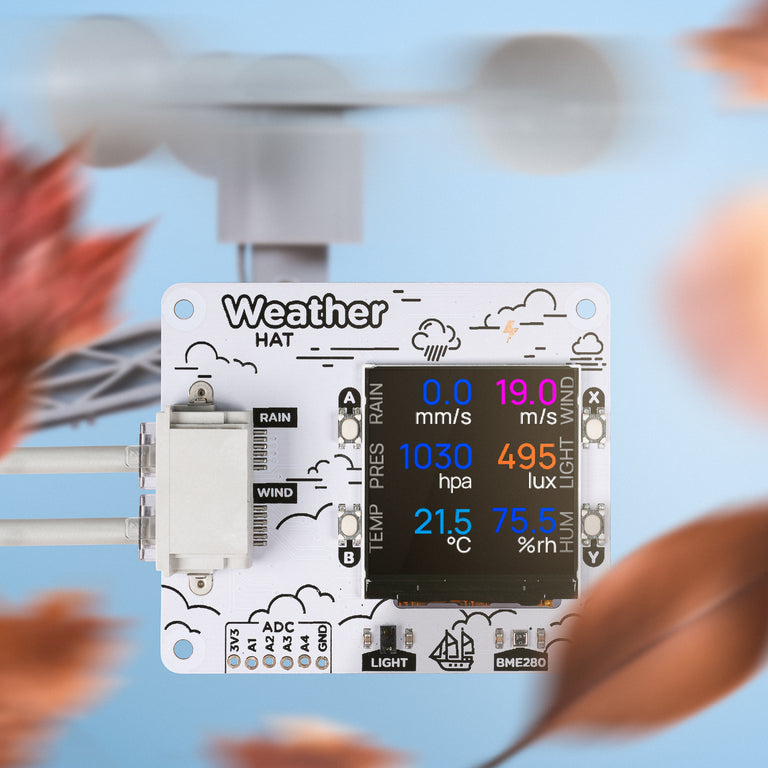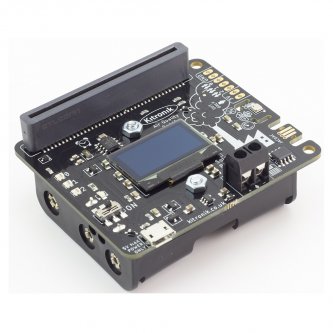Weather Station

A meteorologically minded Raspberry Pi HAT designed to make hooking up weather sensors a breeze (or a squall, or a gale).
- The Globe Program
The GLOBE (Global Learning and Observations to Benefit the Environment) Program is an international science and education program that focuses on promoting scientific literacy and building connections between people passionate about the environment. GLOBE has three primary goals: increasing environmental awareness, contributing to increased scientific understanding of the Earth and supporting improved student achievement in science and mathematics. By participating in GLOBE, students, teachers, researchers and lifelong learners can connect with the program’s global community. - Kitronik Air Quality and Environmental Board for micro:bit

The Kitronik Air Quality Board is a complete air monitoring and reporting solution for the BBC micro:bit. The abundance of on-board sensors and connection ports allows you to collect important air quality data, which can be stored in the on-board memory and displayed on the OLED screen, or transmitted to a computer for review. Kitronik has also created online MakeCode lessons to expose you to all the essential functions of the board - ARDUINO MKR Environmental Shield
MKR ENV Shield
The MKR ENV Shield is a perfect addon for the MKR family series, and is capable of reading temperature, humidity, light and pressure. The data is acquired easily through an easy-to-use library, and has an SD card slot for offline data logging. - Environment Sensor HAT For Raspberry Pi, I2C Bus
The Environment Sensor HAT is designed for Raspberry Pi, with rich onboard resources including ambient light sensor, VOC sensor, IR / UV sensor, gyroscope, accelerometer, magnetometer, barometer, temperature & humidity sensor, and so on. It uses the simple I2C bus for communicating with Raspberry Pi.
The Environment Sensor HAT gives Raspberry Pi the ability to collect environment data like temperature & humidity, air pressure, ambient light intensity, VOC, IR ray, UV ray, etc. It can also be used to build a robot that can detect motion and orientation. - Enviro+ for Raspberry Pi
Monitor your world with Enviro for Raspberry Pi! There’s a whole bunch of fancy environmental sensors on this board, and a gorgeous little full-colour LCD to display your data. It’s the perfect way to get started with citizen science!
Designed for environmental monitoring, Enviro lets you measure air quality (pollutant gases and particulates*), temperature, pressure, humidity, light, and noise level. When combined with a particulate matter sensor*, it’s great for monitoring air quality just outside your house (more information below), or without the particulate sensor you can use it to monitor indoor conditions.
Enviro is an affordable alternative to environmental monitoring stations that can cost tens of thousands of pounds and, best of all, it’s small and hackable and lets you contribute your data to citizen science efforts to monitor air quality via projects - micro:bit meteorologist

What you will make
In this resource, you’ll turn your micro:bit into a meteorologist that can display the weather forecast for the next seven days, for wherever you live.
What you will learn
By creating a micro:bit meteorologist, you will learn:
How to start two-way communication between your micro:bit and your Raspberry Pi
How to fetch a weather forecast using PyOWM
How to create custom images to display on the micro:bit - Wireless Remote Weather Station with micro:bit
In this tutorial, we will utilize MakeCode’s radio blocks to have one micro:bit transmit a signal to a receiving micro:bit on the same channel! This is useful if your weather station is installed in a location that is difficult to retrieve data from the OpenLog. We will explore a few different ways to send and receive data.
